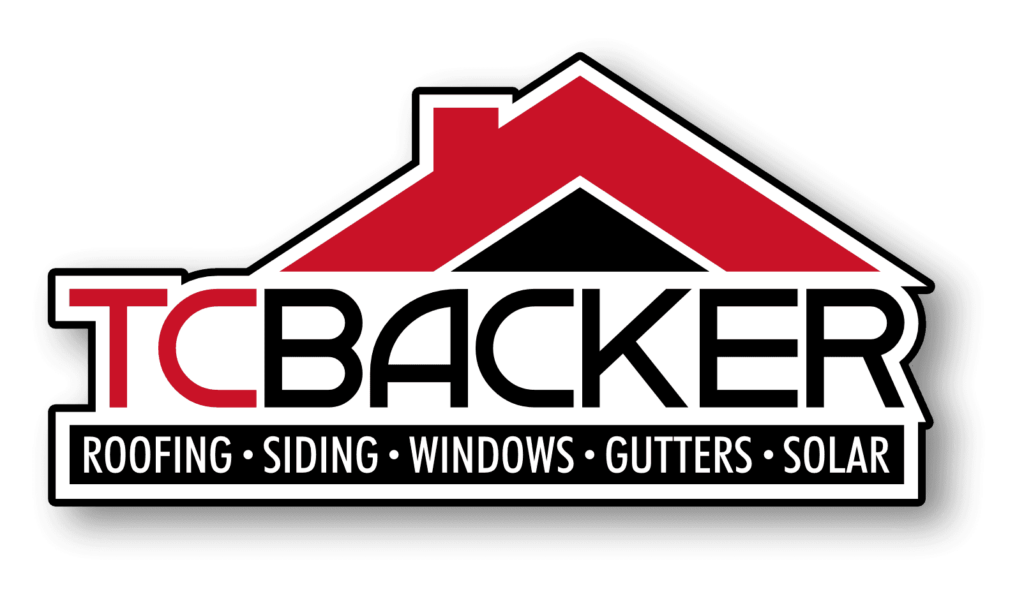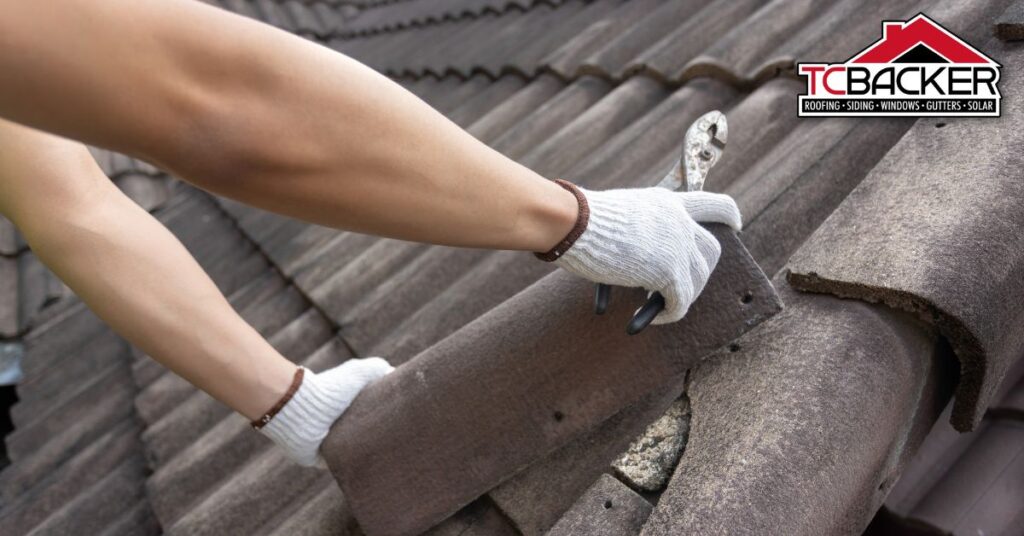Knowing when to replace your roof is essential for safeguarding your home. Key indicators for roof replacement include missing or damaged shingles, water stains on ceilings, and granule loss in gutters. Most asphalt roofs last 15-30 years, while metal and tile roofs can last significantly longer. Weather conditions such as excessive rain or humidity can accelerate deterioration. Regular inspections and assessments of roof age can prevent costly repairs. If significant issues arise, such as sagging or persistent leaks, replacement might be necessary. Understanding these factors will help you make informed decisions about your roofing needs and guide you toward the next steps.
Key Takeaways
- Missing or damaged shingles can expose your roof to moisture, indicating it’s time for replacement.
- Water stains on ceilings and walls signal leaks that may require a new roof.
- A roof’s age matters; asphalt shingles typically last 15-30 years and may need replacement sooner.
- Signs of sagging or structural issues mean immediate attention is needed, often leading to a roof replacement.
- Regular inspections can reveal hidden problems, helping you determine if it’s time for a new roof.
Signs Your Roof Needs Replacement
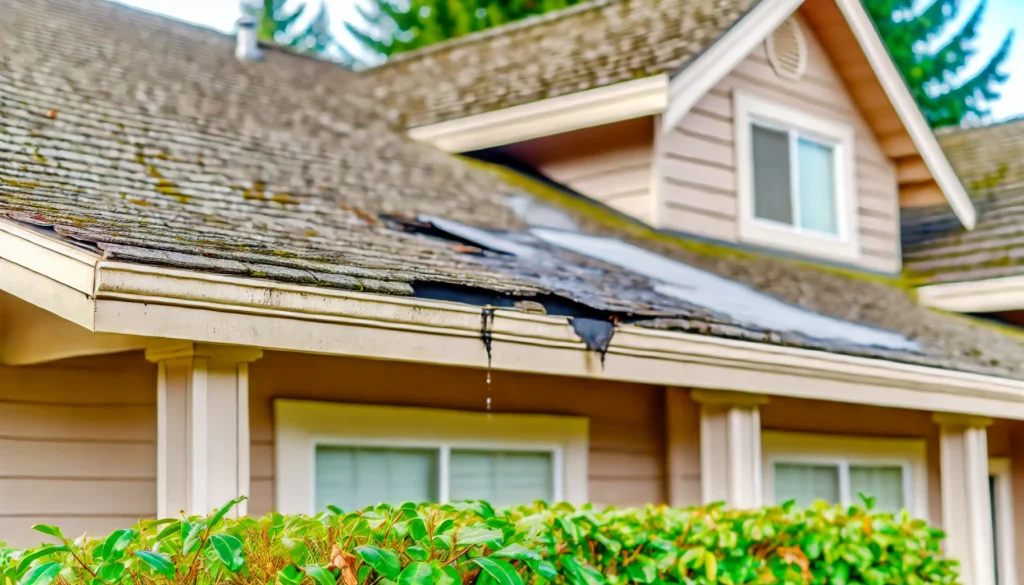
Recognizing the signs of roof deterioration is crucial for homeowners to ensure the safety and longevity of their property. Early identification of these signs can prevent more extensive damage and costly repairs.
One of the most obvious indicators that a roof may need replacement is the presence of missing or damaged shingles. Shingles that are cracked, curled, or completely absent can expose the underlying structure to moisture, leading to further deterioration.
Another significant sign is the appearance of water stains or discoloration on interior ceilings and walls. These stains often indicate that water is penetrating through the roof, which can result in mold growth and structural damage if not addressed promptly.
Additionally, homeowners should be vigilant for granule loss in the gutters. Granules protect shingles from UV rays, and their loss can accelerate roof deterioration.
Furthermore, if a homeowner notices sagging areas on the roof, this could signify structural issues that require immediate attention. Another red flag is the presence of light filtering through the roof boards, which indicates gaps that could allow water infiltration.
Lastly, an aging roof, typically over 20 years old, may warrant a professional evaluation, as many roofing materials have a limited lifespan.
Typical Lifespan of Roofing Materials

The typical lifespan of roofing materials varies significantly depending on the type of material used, with asphalt shingles averaging around 15 to 30 years, while metal roofs can last 40 to 70 years or more. Understanding the longevity of various roofing materials is crucial for homeowners planning maintenance or replacement.
Here’s a concise overview of various roofing materials and their expected lifespans:
| Roofing Material | Average Lifespan (Years) | Notes |
| Asphalt Shingles | 15 – 30 | Most common, cost-effective. |
| Metal Roofs | 40 – 70 | Durable, energy-efficient. |
| Wood Shingles | 20 – 25 | Aesthetic appeal, requires upkeep. |
| Slate Roofs | 50 – 100 | Long-lasting, high initial cost. |
| Tile Roofs | 50 – 100 | Heavy, durable, resistant to elements. |
Each roofing material has its own set of advantages and disadvantages, influencing not only lifespan but also maintenance requirements and overall cost. For instance, while asphalt shingles are economically appealing, they may require replacement sooner than more robust materials like slate or tile. Conversely, investing in a metal roof can provide long-term savings due to its extended lifespan and durability.
When considering a roof replacement, evaluating the lifespan of the available materials can aid in making an informed decision that aligns with both budget and long-term goals.
Impact of Weather on Roof Health
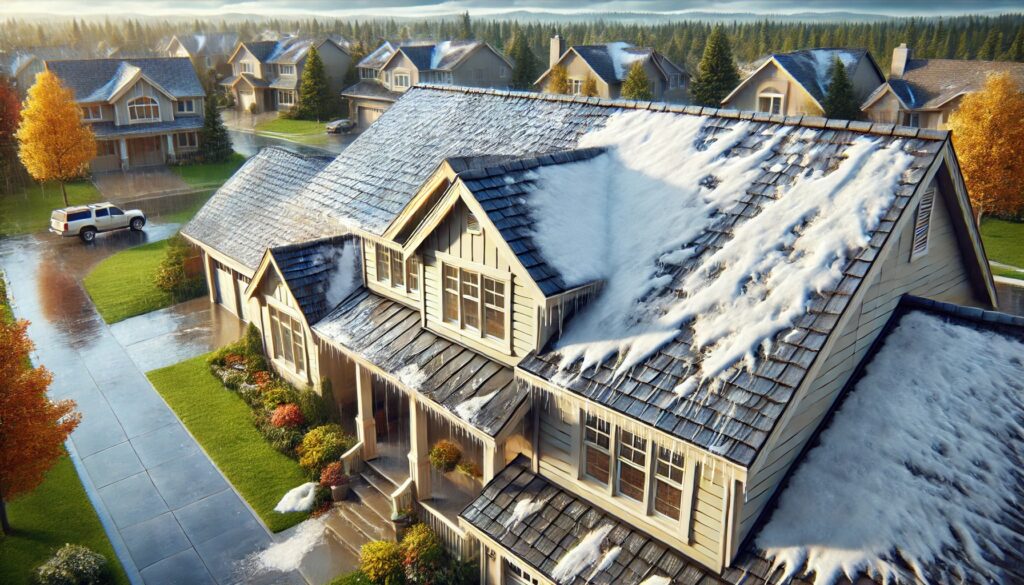
Different roofing materials not only have varying lifespans but are also significantly influenced by weather conditions, which can impact their overall health and longevity. Understanding how different weather elements affect your roof is crucial for maintaining its integrity and ensuring timely replacements.
- Rain and Humidity: Prolonged exposure to moisture can lead to mold, mildew, and rot, particularly in wooden or asphalt shingle roofs. This can compromise structural integrity and necessitate early replacement.
- Snow and Ice: Accumulated snow can add excessive weight, potentially causing structural strain. Ice dams can form at the eaves, preventing proper drainage and increasing the risk of leaks.
- Wind: High winds can lift shingles, tiles, or other roofing materials, leading to potential water infiltration. Regular inspections after storms can help identify any damage that may require prompt attention.
- UV Radiation: Prolonged sun exposure can degrade roofing materials, especially asphalt shingles, causing them to become brittle and lose granules. This degradation can accelerate the aging process, making regular maintenance essential.
Each of these weather-related factors plays a vital role in determining when a roof may need replacement. Homeowners should remain vigilant and conduct regular inspections to assess any weather-related damage, which can help in planning for necessary repairs or replacements before issues escalate.
Assessing Roof Age and Condition
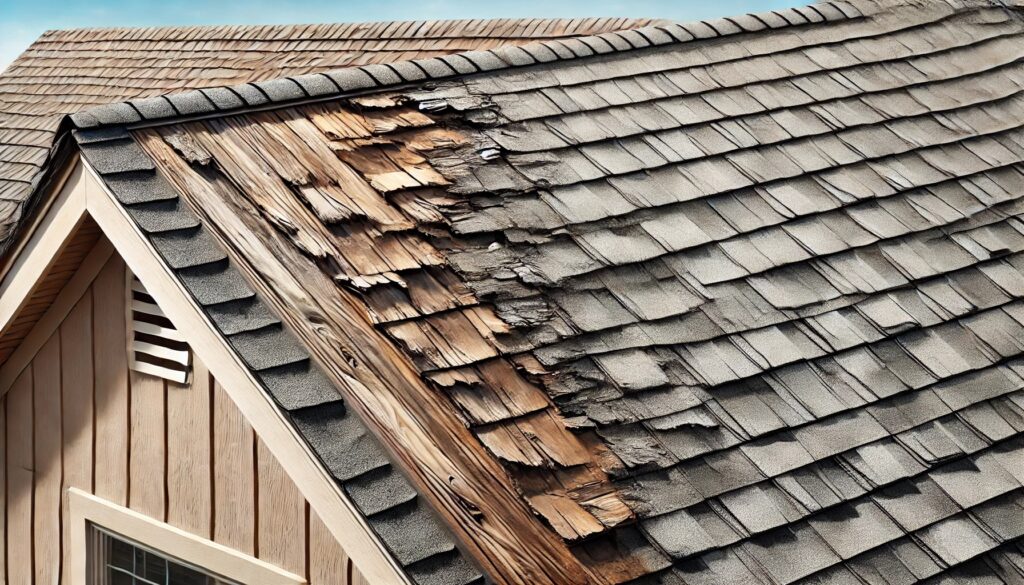
Evaluating the age and condition of a roof is essential for determining its remaining lifespan and identifying the need for replacement. Generally, roofing materials have specific life expectancies; for instance, asphalt shingles typically last 20 to 25 years, while metal roofs can endure for 50 years or more. Understanding the age of your roof can help homeowners anticipate the potential for replacement before significant issues arise.
To assess the condition, begin by conducting a visual inspection. Look for signs of wear, such as missing or curling shingles, discoloration, and granule loss. These indicators can point to weathering and deteriorating material. Additionally, inspect the roof’s surface for cracks or sagging, which may suggest structural damage. Pay attention to any visible leaks or water stains inside the home, as these can signal underlying problems.
Another important aspect of assessment involves checking the roof’s ventilation and drainage systems. Proper ventilation helps prolong the life of roofing materials by regulating temperature and moisture levels, while effective drainage prevents water accumulation that can lead to rot and mold.
Homeowners should document any findings from their assessments and consult roofing professionals when necessary. A qualified contractor can provide a more detailed evaluation, recommending repairs or confirming the need for a full replacement based on the roof’s age and condition.
Regular assessments are crucial for maintaining the integrity of your home and ensuring that you address roofing issues before they escalate.
Common Roofing Issues Explained

Common roofing issues can significantly impact the longevity and performance of a roof, making it crucial for homeowners to recognize and address them promptly. Understanding these common problems can help prevent costly repairs and ensure the safety of your home.
- Leaks: One of the most prevalent issues is roof leaks, often resulting from damaged shingles, flashing, or improper sealing around vents. Regular inspections can help identify and mitigate leaks before they cause extensive damage.
- Damaged Shingles: Shingles may become cracked, curled, or missing due to weather conditions, age, or improper installation. Damaged shingles not only compromise the roof’s integrity but can also lead to leaks and other complications.
- Pooling Water: Flat roofs are particularly susceptible to pooling water, which can lead to material degradation and leaks. Ensuring proper drainage and a slight pitch can help prevent water accumulation.
- Moss and Algae Growth: The presence of moss and algae can trap moisture against the roof, leading to shingle deterioration. While often viewed as a cosmetic issue, these organisms can invite further damage if not addressed.
DIY Roof Inspection Tips

Conducting a DIY roof inspection is an essential practice for homeowners to identify potential issues early and maintain the overall integrity of their roofing system. Regular inspections can help catch problems before they escalate, saving time and money in the long run.
Begin your inspection from the ground by using binoculars to examine the roof for visible signs of damage such as missing shingles, cracks, or sagging areas. Look for any debris accumulation, which can trap moisture and lead to deterioration.
Next, safely access the roof to perform a closer inspection. Ensure you have a sturdy ladder and proper safety equipment. Once on the roof, inspect the shingles for curling, blistering, or wear. Pay particular attention to the flashing around chimneys, vents, and skylights, as these areas are prone to leaks.
Check the gutters for granules washed off from shingles, which can indicate advanced wear. Additionally, assess the underside of the roof in the attic for signs of water damage, mold, or daylight peeking through. These indicators may suggest leaks or structural issues that require immediate attention.
Lastly, document your findings with photos and notes to track changes over time. If you notice any significant damage or are uncertain about your observations, it is wise to consult a professional roofer for further evaluation.
Regular DIY inspections empower homeowners to take proactive steps in roof maintenance, ensuring a safe and durable home.
Professional Roof Inspection Benefits
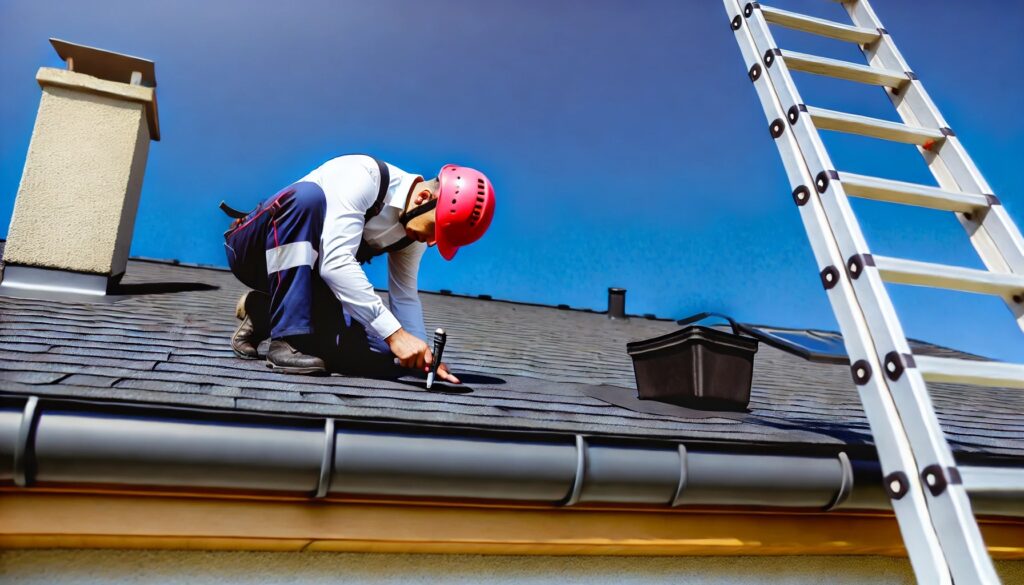
While DIY inspections are valuable for identifying minor issues, engaging a professional for a roof inspection brings expertise and thoroughness that can uncover hidden problems and ensure the longevity of your roofing system.
Professionals possess the training and experience necessary to evaluate your roof comprehensively, identifying potential issues that may not be visible to the untrained eye.
Here are four key benefits of hiring a professional for your roof inspection:
- Expert Evaluation: Professionals have a deep understanding of different roofing materials and their specific vulnerabilities. They can assess the overall condition of your roof more accurately.
- Access to Specialized Tools: Roofing experts often use advanced tools and technologies, such as drones or thermal imaging, to detect issues that may not be apparent from the ground, ensuring a thorough inspection.
- Comprehensive Reporting: A professional inspection includes a detailed report outlining the condition of your roof, any necessary repairs, and a recommended maintenance plan. This documentation can be invaluable for future reference or when selling your home.
- Safety Considerations: Climbing onto a roof can be dangerous, especially without proper training and equipment. Professionals are trained to work safely at heights and can mitigate risks associated with inspections.
Final Thoughts
Regular roof maintenance and timely replacement are key to preserving the structural integrity of your home. By staying vigilant to the signs of roof wear and understanding the lifespan of your roofing materials, you can make smart decisions that avoid costly repairs and extend the life of your home. Whether you choose to conduct an inspection yourself or hire professionals, being proactive ensures your investment is protected and your home remains safe and secure.
For expert advice, inspections, or roof replacements, trust TC Backer Construction to guide you every step of the way. With our professional team and industry-leading materials, we ensure your home is well-protected from the elements. Call us today or contact us online to schedule a consultation. Keep your home secure with TC Backer Construction!

